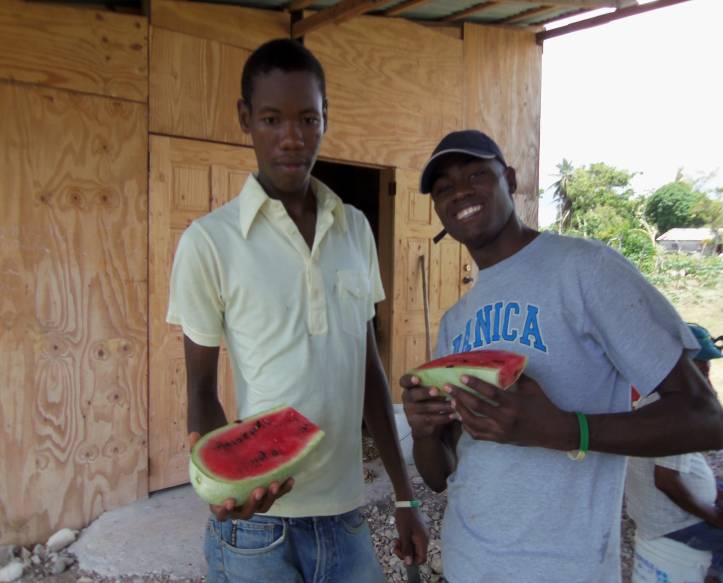Humanitarian Aid
Food Insecurity and the Silent Crisis in Haiti

Quietly, a crisis is brewing in Haiti. You likely have not heard about it. It rarely makes headlines or even surfaces in mainstream media. It currently affects 6.7 million people, or about two-thirds of the country’s population. And it is getting worse.
At the center of this crisis is one of humanity’s most basic needs—food. In Haiti, as of March of this year, 6.7 million people face food insecurity. Simply put, food insecurity refers to a limited supply of food and the inability to access it. This means families in Haiti, already stretched financially, are forced to make hard decisions. Where will we get food today? How much food can we afford? Will we eat two meals, one, or even none today? Can I afford my children’s school fees when there are more pressing needs? These are questions no one should have to ask and wrestle with on a daily basis.
Why is Haiti on the verge of a food crisis?
Like many things in Haiti, there is not one answer. However, a series of brutal storms and droughts in the past year has been a big player. There is a brilliant infographic published by the United Nations Office for the Coordination of Humanitarian Affairs (OCHA) that provides an overview of the natural disasters Haiti has faced since May 2012 and how these events have exacerbated the food situation.
The destruction Tropical Storm Isaac and ‘Superstorm Sandy’ left behind in 2012 meant combined agricultural losses totaling $174 million. This is an incredible amount of money when you consider that the average Haitian only earns $700 per year. There is no safety net in Haiti, aside from the support one has from their family and others in the community. Though Haitian culture is very communal and it is almost expected that you will help out someone when they are in trouble, there is only so much support that can be given.

For poor farmers, the most valuable thing they have is the land they work. Their entire income may be dependent upon a successful harvest. Following Hurricane Sandy, 70% of Haiti’s crops were destroyed. This means a loss of income for many farmers and less food available on the market, which drives up prices. These two outcomes, due to a rough year of consecutive natural disasters, are why so many people are currently facing food insecurity.
Even in normal conditions, Haitians spend a huge portion of their income on food. Rural households spend almost 60% of their income on food and the poorest groups spend more than 70%. Compare that to the average American who spends 11% of their income on food. It doesn't take much to imagine how drastically different your life would be if it took the majority of your income just to feed yourself.
The cost of living here in Haiti is actually quite high and is not something widely known. It has definitely surprised my wife and I since we moved here to work with World Concern. To put things in perspective, currently our monthly food budget is the same as it was in Seattle (and we’re not buying imported wines and cheeses). We often eat rice twice a day because it is cheap, a good filler, and we like it. We have the resources to feed ourselves even if the cost steadily rises. Unfortunately, this is not true for many in Haiti especially as food insecurity worsens.
So, what can be done about the Food Crisis?
A priority must be to get farmers producing again. Productive farmers mean increased income for families and also a needed boost to local production. This is why supporting farmers and helping them become successful is important and positively impacts both farmers and consumers alike.
World Concern’s food security project is one way we are attempting to support rural farmers. In 2013 alone, this project aims to improve food security for 2,000 people. This is a really cool project and one that I am happy to share about. World Concern leases three hectares of land in three different departments and uses the space as an outdoor classroom. Here, local smallholder farmers are taught how to produce high-quality seed that they can use season after season.
Other trainings geared towards youth interns, the next generation of farmers, teach best practices. Another important piece of this project is the introduction of mechanized equipment to local farmers. Many farmers in Haiti work the land manually which is tedious and difficult work. The project uses small tractors to help farmers increase productivity.

Row of okra at World Concern's agricultural training center (outdoor classroom) in southern Haiti.

Youth interns at the training center enjoying some watermelon.

A training about how to protect the soil and prevent erosion.

Getting some hands on experience.

One of the project's tractors hard at work. The tractors are used to help local farmers during planting.
Food insecurity remains a real threat to families in Haiti. This is a big issue and cannot be dealt with quickly. However, it is exciting to see and strengthen their capacity to become productive.
This is definitely a silent crisis. My goal is to, at the very least; make people aware of the current situation and how it is affecting millions of people in Haiti. So please check out the links you see throughout this post and become informed. Even do a little research on your own if you feel compelled. In order to effectively engage we must understand what is going on and why.